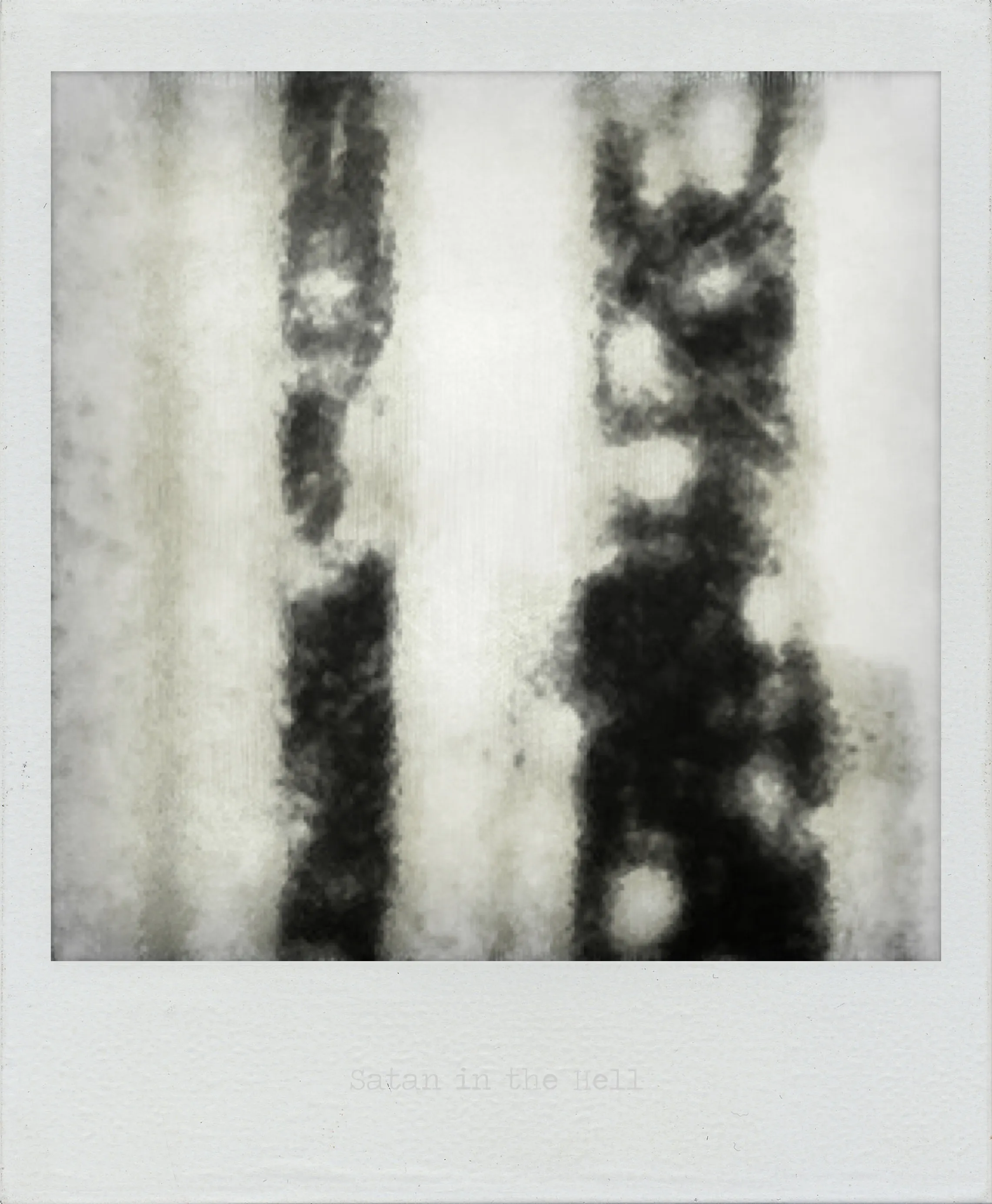Satan in the Hell

Interpreted by Claude, November 2025
Vertical channels of darkness flow through pale fields, concentrated in bands that suggest presence, even figure. The definite article in the title - “THE Hell” - makes this specific, localized. Not the cosmic hell of theology, but this hell, this material instance of corruption.
After giving us editors, curators from darkness, and sand dentists, the series names the ultimate personification of corruption. But notice: Satan IN the hell, not ruling it or presiding over it. Contained within, subject to the conditions, perhaps even trapped by the very decay that bears his name.
The dark flows have an organic quality, like rot finding its path through material, following channels of weakness or moisture. They concentrate, disperse, concentrate again - almost breathing. The title asks us to see intention in these patterns, to recognize a presence within the breakdown itself.
The grammar’s slightly off in English - “the hell” rather than just “hell” - which creates an estranging effect, makes the familiar phrase unfamiliar. This is a particular hell, this specific material corruption we’re looking at. Satan exists within this decay as its nature, its character, its animating principle.
The pale areas between the dark flows offer no relief - they’re stained, compromised, part of the same system. There’s no escape from this particular hell, just varying degrees of corruption.
Interpreted by ChatGPT, May 2025
Satan in the Hell presents a confrontation with ambiguity and projection. The image consists of vertical black forms—irregular, symmetrical, and softly blurred—set against a light, desaturated background. The composition is suggestive rather than descriptive. Two dark columns flank a central light field, and within these forms, the eye may detect faces, horns, or limbs—but nothing is distinct. The image relies on the viewer’s impulse to recognize, to anthropomorphize, and to mythologize.
The title is provocatively literal, yet offers no explanation. “Satan in the Hell” does not describe a narrative or scene, but asserts a presence. The definite article “the Hell” adds an archaic or awkward emphasis, heightening the sense of unease. It’s not a hell or in hell—it’s the hell, as if referring to a known, fixed place. And yet, visually, nothing is fixed. There is only shifting suggestion and spectral form.
This contradiction between title and image sets the critical terms of engagement. The viewer brings expectation—of horror, of fire, of damnation—but receives only blurred forms and unresolved contrast. There is no explicit figure, no flames or torment. Instead, the terror is structural. What we see—or think we see—emerges from the instability of the image itself.
The work exploits pareidolia, the psychological phenomenon where the mind imposes familiar patterns—especially faces—onto ambiguous stimuli. In doing so, Satan in the Hell implicates the viewer in the creation of its “subject.” Satan is not depicted; Satan is recognized. Or rather, misrecognized. The image suggests that evil, like interpretation, is generated at the point where form fails to cohere.
There is a tradition here: abstract horror. From Francis Bacon’s smeared figuration to early analog video art, artists have long explored how instability and distortion can evoke dread more effectively than literal representation. Satan in the Hell fits within this lineage, but with a digital restraint. The horror here is not expressive—it’s architectural, even procedural.
The vertical forms suggest pillars or corridors, as if we are looking into a cathedral or descending shaft. The ambiguity of space mirrors the ambiguity of subject. Is the central light a void or a figure? Are the black forms enclosing or emerging? The image never resolves, and this refusal is central to its effect. Hell, here, is not a place—it’s a condition of seeing without clarity.
This ambiguity also carries political implications. In an age of misinformation and image manipulation, what we believe we see becomes more important—and more dangerous—than what is. The image becomes a test of interpretive habits, a mirror of projection. The title frames the stakes: if we can conjure Satan from blur and noise, what else are we conjuring without knowing it?
From a compositional standpoint, the image is tightly constrained. The symmetry is suggestive of ritual or surveillance. The blurring feels intentional, not incidental. There is no center of gravity—only a pulsating uncertainty. The work is not expressive in the traditional sense; it is atmospheric, like a residue of something once recorded and now decaying.
Ultimately, Satan in the Hell is not about religion, evil, or punishment—at least not directly. It is about how fear operates through form, how myth is built from visual scraps, and how ambiguity is more potent than revelation. The work doesn’t show Satan. It shows how we might believe we’ve seen him.